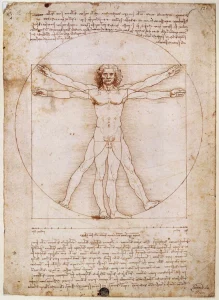What is a normal human being?
There is no such thing as a normal human being, as there is such a wide range of normality (both anatomy and physiology). Let’s look at those ranges.
Anatomy
Height – the average height of a man in England is 5’9″ (175.3 cm), and the average height of a woman is 5’3″ (161.6 cm). Interestingly there is no reliable data on the normal range for height.
Weight – the average weight of a man in England is 13.2 stone (83.6 kg), and the average weight of a woman is 11 stone (70.2 kg). Again there is no good data on a normal range for weight.
Physiology
- Blood pressure (BP): 120/70 (but this varies second to second)
- Pulse (heart) rate: 80 beats per minute (ditto)
- Breathing (respiratory rate): 16 breaths per minute
- Temperature (core): 37°C
- Blood pH (acid-base balance): 7.40.
- Blood pressure (BP): between 100/70 mmHg and 135/85 mmHg
- Pulse (heart) rate: 60 to 100 beats per minute
- Breathing (respiratory rate): 12 to 20 breaths per minute
- Temperature (core): average 37°C (36.5°C to 37.3°C)
- Blood pH (acid-base balance): pH range 7.35 to 7.45, with the average of 7.40.
In fact these biomedical variables are also not true (anything in medicine or science that is ‘too neat’ is rarely true). They are just currently accepted normal ranges, for most people, most of the time.
So where do these averages come from?
They are usually calculated by measuring the parameter in large numbers of (usually younger) people; then using 2 standard deviations from the mean, as the upper and lower limits of ‘normal’.
In other words, there will be plenty of normal well people with:
- A BP of 145/95
- A pulse rate of 40 bpm and
- A core temperature of 35.7 C.
And these people do not have a disease.
Normal (or Gaussian) distribution
This is because they are biomedical variables that follow a Normal (or Gaussian) distribution, like weight or height – as shown in the following graph.
And people who are 154cm and 196 cm (3 SDs from the mean) are not ill.
That graph would be the same shape (with the same inferences) for blood pressure, heart or respiratory rate, temperature and pH.
:max_bytes(150000):strip_icc()/HtsEmpirical-1-d8d33ce1b8a64870a8cd0d67f1d8bf0d.png)
Graph of average human height
A bit of history about a perfect man
Lets go back to the Renaissance.
Is a normal human being similar to the ideal perfect man (with perfect classical proportions), as created by Leonardo Da Vinci?

This drawing is called Vitruvian man. It’s how Da Vinci represented a classical Roman ideal (of a ‘perfect’ man’), which included:
- The umbilicus at half of the man’s height
- Arms and legs shown in 2 positions reaching the edge of a square or circle.
Why did Da Vinci draw a white adult male? Is a normal human black, white, brown, yellow or another colour? Man or woman? Adult or child?
Conclusion
There is no normal human being. There is an average human being with average anatomical and physiological variables. But even that has little meaning.
Other resources
What is normal heart rate?
What is normal blood pressure?
What is normal body temperature?
What is normal respiratory rate?
What is normal pH?

